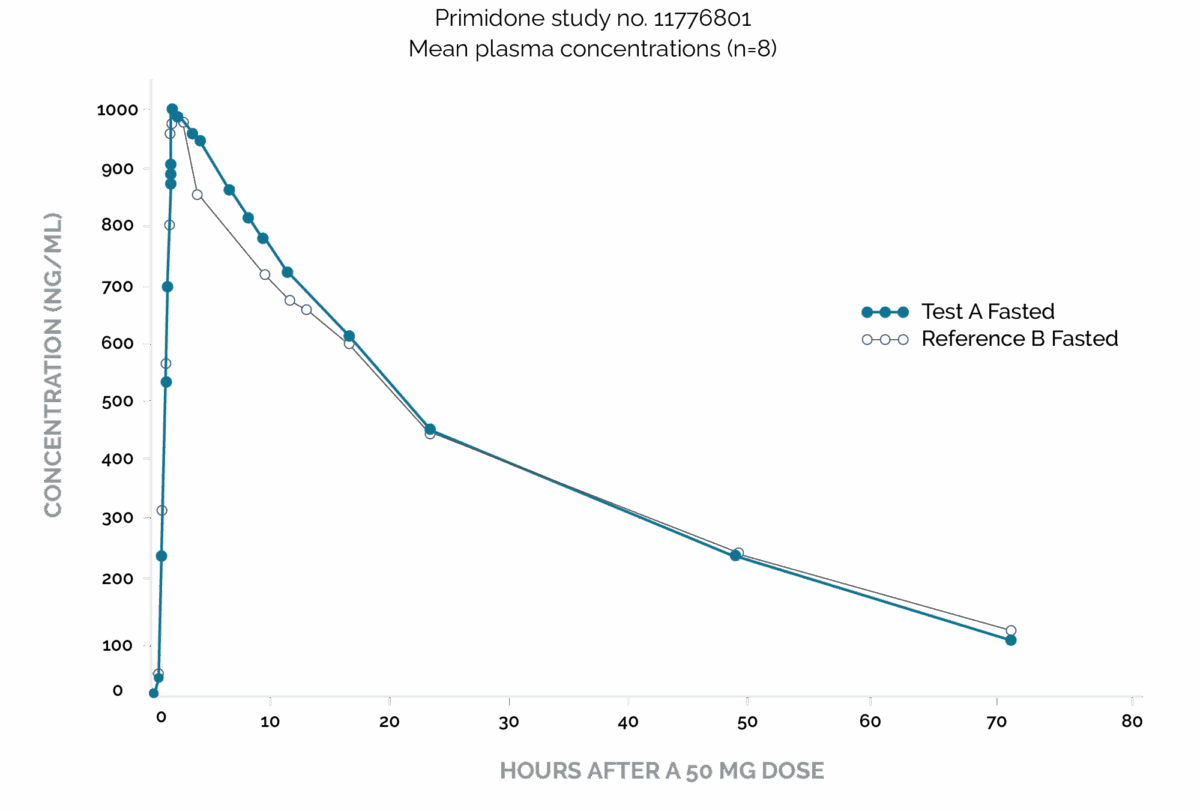WARNING: RISK OF SUICIDAL THOUGHTS AND BEHAVIORS; ABRUPT WITHDRAWAL; CNS DEPRESSION; HEMATOLOGIC ABNORMALITIES; USE IN PREGNANCY AND LACTATION; PHENYLKETONURIA; AND MAXIMUM DOSAGE LIMITATIONS
Suicidal Thoughts and Behaviors
Antiepileptic drugs (AEDs), including PrimaxaTM ODT (primidone orally disintegrating tablets), may increase the risk of suicidal thoughts or behavior. This risk is class-wide and applies to all AEDs, regardless of indication. Monitor all patients for new or worsening depression, suicidal ideation, or unusual changes in mood or behavior. Inform patients, caregivers, and families to be alert for these symptoms and to report them immediately.
Abrupt Withdrawal
Abrupt discontinuation of Primaxa ODT may result in increased seizure frequency or status epilepticus. Withdrawal should be done gradually under close medical supervision to minimize risk.
Central Nervous System Depression
Primaxa ODT can cause dose-dependent CNS depression. The most frequently reported side effects include sedation, dizziness, ataxia, vertigo, nausea, and visual disturbances. Caution patients against performing activities requiring mental alertness, such as driving or operating machinery, until they understand how the medication affects them.
Hematologic Abnormalities
Serious blood disorders have been reported with Primaxa ODT, including agranulocytosis, aplastic anemia, and red cell aplasia. Periodic complete blood counts are recommended during prolonged therapy. Megaloblastic anemia may also occur as a rare idiosyncratic reaction and typically responds to folic acid supplementation without discontinuing therapy.
Use in Pregnancy
The effects of primidone in human pregnancy are not well established. Use during pregnancy only if the potential benefit justifies the potential risk to the fetus. AEDs have been associated with an increased incidence of birth defects. Neonatal bleeding resembling vitamin K deficiency has been reported; consider vitamin K1 supplementation during the last month of pregnancy.
Use in Lactation
Primidone and its metabolites are excreted into breast milk in substantial quantities. Monitor nursing infants for signs of sedation or feeding difficulties. Discontinue breastfeeding if adverse effects are observed.
Phenylketonuria Warning
Primaxa ODT contains aspartame, a source of phenylalanine. Use with caution in patients with phenylketonuria.
Maximum Dosage Limitation
The total daily dose of Primaxa ODT should not exceed 2 grams. Therapeutic effects may take several weeks to be fully realized. Patients on long-term treatment should undergo periodic monitoring, including bloodwork and metabolic panels (e.g., SMA-12) every 6 months.
Adverse Reactions
The most common side effects include nausea, anorexia, vomiting, fatigue, hyperirritability, emotional disturbances, sexual dysfunction, diplopia, nystagmus, drowsiness, and morbilliform skin eruptions. Early side effects such as ataxia and vertigo tend to resolve with continued therapy or dose reduction. Rare but serious events include dermatologic reactions and hematologic abnormalities. Most adverse events are dose-related and may subside with dosage adjustment or continued use.
Please see full Prescribing Information for additional safety and dosing information.
References
1. PRIMAXA Prescribing Information. TBD Date upon approval. 2. Smith DB, Mattson RH, Cramer JA, et al. Results of a nationwide veterans administration cooperative study comparing the efficacy and toxicity of carbamazepine, phenobarbital, phenytoin, and primidone. Epilepsia. 1987;28(3):S50-S58 3. Data on File. J2Bio-Pharma, LLC. 2025. 4. Primidone dosage. Drugs.com. Updated September 7, 2023. Accessed July 16, 2025. https://www.drugs.com/dosage/primidone.html. 5. UK Medicines Information. Generic antiepileptic drugs in epilepsy: update. Specialist Pharmacy Service. Published September 2020. 6. Raebel MA, Carroll NM, Andrade SE, et al. Monitoring of drugs with a narrow therapeutic range in ambulatory care. Am J Manag Care. 2006;12(5):268-274. 7. Shaw SJ, Hartman AL. The controversy over generic antiepileptic drugs. J Pediatr Pharmacol Ther. 2010;15(2):81-93. 8. LiverTox: Clinical and Research Information on Drug-Induced Liver Injury. National Institute of Diabetes and Digestive and Kidney Diseases; 2012-. Primidone. Updated August 12, 2020.

